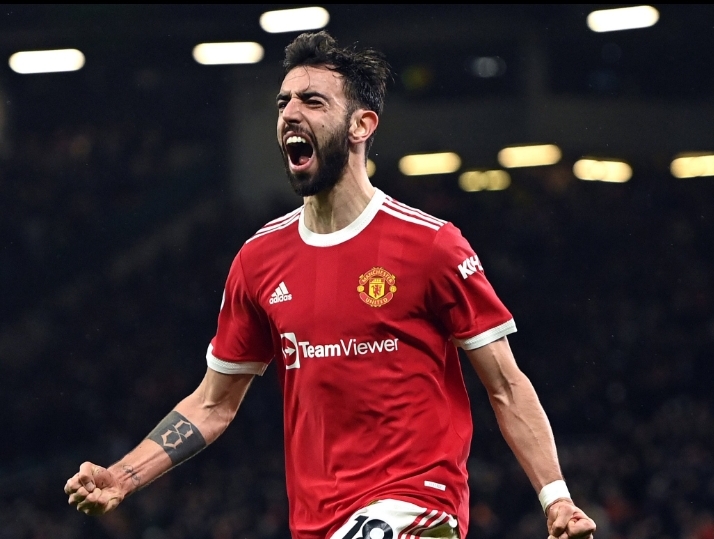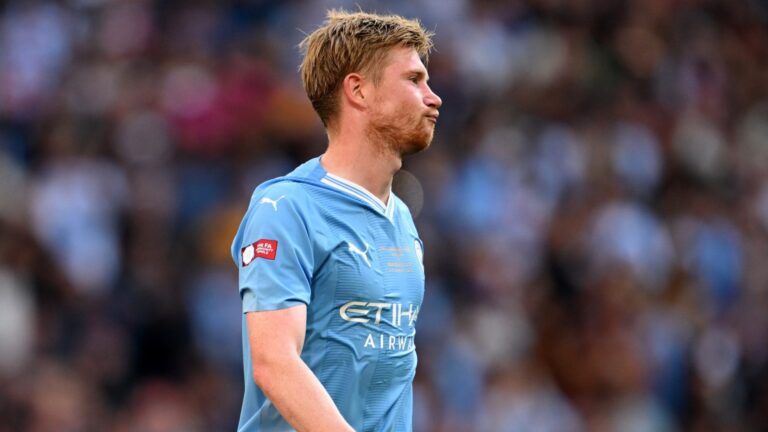Soccer strikers play one of the most important and demanding positions on the pitch. Their main role is to score goals and be clinical finishers inside the opposition’s penalty area. The best strikers have a unique combination of physical, technical, and mental attributes that allow them to excel in this specialized role.
We will explore the top 10 key characteristics and abilities that define world-class soccer strikers. Understanding these traits provides great insight into what makes a truly complete forward at the highest level of the game.
Accuracy and Composure in Front of Goal
The most fundamental requirement for any top-level striker is the ability to demonstrate consistent accuracy and composure when presented with goal-scoring chances. Strikers must have the technical skills and unerring focus required to be clinical finishers, even when put under immense pressure by defenders.
The best strikers are able to convert a high percentage of the chances that come their way by shooting with precision from various angles and distances. They have an innate ability to find the corners of the net and apply the correct amount of power and placement to their shots. Remaining calm under pressure and avoiding snatching at chances is a hallmark of talented strikers like Robert Lewandowski and Harry Kane.
Even when shooting on their weaker foot, elite strikers can maintain control and accuracy due to their technically proficient shooting technique. Their composure and decision-making when bearing down on the goal are unmatched, allowing them to regularly display ruthless precision in front of the goal.
Speed and Acceleration
In addition to their composure and accuracy in front of goal, top strikers also possess the speed and acceleration necessary to get into dangerous scoring positions. Bursts of pace allow forwards to beat opposing defenders and create separation when making runs behind the defensive line.
The acceleration of elite strikers is a key asset that grants them the extra yard to evade defenders and latch onto through balls played over the top. Their rapid change of speed allows them to go from a standing position to their top speed quickly, helping them gain an advantage over slower center backs.
Quick and agile movement is crucial for strikers when making angled runs across the face of the goal. The pace they generate gives them more time and space to take an extra touch or line up their shot on goal. Defenders are left swiveling and off-balance as slick strikers like Kylian Mbappe speed past them into space behind them.
Forwards who lack quickness and acceleration struggle to get on the end of passes and create opportunities for themselves. The very best strikers have the physical gifts to blow past back lines and finish moves with their electric turn of pace. Their explosive speed provides a constant threat to defenses, forcing them to play deeper to contain them.
Agility and Balance
In conjunction with speed, top-class strikers also demonstrate incredible agility and balance when operating in crowded penalty boxes. The ability to twist, turn, pivot, and change direction quickly allows them to lose their markers and find pockets of space in which to receive the ball.
Elite forwards have a low center of gravity and excellent body control, which enables them to shield the ball effectively when holding off physical challenges from defenders. Their spatial awareness and nimble footwork let them maneuver out of tight spaces when surrounded by multiple defenders.
Strikers like Luis Suárez and Sergio Agüero exhibit the ideal combination of balance and coordination to adjust their body position in the air and absorb contact when challenging for headers and volleys. They can absorb challenges, regain their balance, and still retain the composure necessary to apply an accurate finish.
Goal-hanging strikers who lack agility struggle when having to connect play outside the box or beat a defender in isolated situations. The ability to dribble out of tight spaces with close control is crucial for a well-rounded striker. Their technical poise and pinpoint balance help top forwards find a yard of space to unleash shots when it appears impossible.
Heading Ability
Given the importance of crosses into the box at the highest levels, elite strikers must excel in the air and possess strong heading capabilities. Top forwards use their physical courage and technical skill to attack crosses, even when heavily marked by defenses.
The best aerial strikers have perfect timing and coordination when leaping for headers. They can read the flight of the ball quickly and place themselves in optimal positions to make downward contact using their neck muscles.
Strikers like Olivier Giroud and Cristiano Ronaldo demonstrate sheer power and accuracy when heading directly at goal. Other forwards like Karim Benzema excel at glancing headers that re-direct the ball into the corners. Their bravery in challenging for crosses through crowded penalty areas resulted in many goals.
Weaker strikers often shy away from aerial battles or mistime their jumps. The most well-rounded forwards have the physical presence and technical heading technique to provide a constant threat inside the six-yard box. Their aerial dominance provides an added means of scoring goals when cutting off low crosses along the face of the goal.
Technical Dribbling Skills
Complete strikers are more than just proficient finishers – they also possess excellent close control and dribbling techniques to complement their scoring instincts. Forwards like Neymar Jr. and Lionel Messi showcase a whole repertoire of flicks, feints, stepovers, and other skills to beat defenders in isolated situations.
Elite strikers are comfortable receiving the ball with their back to the goal and able to shield the ball from challenges using their strength and low center of gravity. Their ability to maneuver out of tight spaces using deft touches and swift changes of direction makes them a handful for defenders near the box.
Strikers who lack technical dribbling skills often struggle when the play breaks down and they are forced into 1v1 battles. The capacity to drive past fullbacks down the flanks or cut inside onto their stronger foot is a valuable asset. Composure under pressure also allows talented dribblers to retain possession in advanced areas and recycle the ball to onrushing teammates.
Overall, sound technical dribbling gives forwards multiple options when attacking – they can blow past the fullback, retain possession under pressure, or draw fouls and penalties. Forwards who rely solely on pace and power often come unstuck when they encounter well-drilled defensive units.
Finishing with Both Feet
The most complete strikers in world soccer boast the rare ability to finish chances with both feet. Being comfortable shooting with their weaker foot makes them extremely unpredictable for opposing defenders and goalkeepers.
Forwards who can only finish with one foot often have to take an extra touch to set up their stronger foot, wasting valuable time in the process. However, two-footed players like Pedro and Cristiano Ronaldo can adjust their body position and strike the ball cleanly irrespective of the angle.
The added unpredictability of two-footedness allows versatile strikers to shoot immediately from wider positions rather than attempting to shift the ball onto their dominant foot. Their adaptability also helps when chances fall to their weaker side, as they can still pick out the corners with pinpoint accuracy.
Goalkeepers find it harder to cover their angles against two-footed forwards, who keep them guessing as to which corner will be attacked. Defenders similarly struggle to show reliable one-footed strikers onto their weaker side during build-up play. Overall, being competent with both feet makes forwards more efficient finishers.
Spatial Awareness
Intelligent movement and understanding of space is a hallmark of all well-rounded strikers. The very best forwards have an innate capacity to find pockets of space by making clever angled runs behind defenses.
Top strikers are always scanning and analyzing the positioning of defenders as attacking moves build up. Their ability to recognize areas left uncovered by back lines allows them to time their runs perfectly to receive through balls.
Strikers must also appreciate the importance of dragging defenders out of position to open up space for teammates. Their selfless runs create gaps for onrushing midfielders that would not exist otherwise.
The ultimate strikers have an intuitive understanding of their teammates’ movements and make runs that complement each other. Almost telepathic link-up play with fellow attackers allows clinical one-touch finishes to cut through defenses.
Forwards who fail to recognize and attack space off the ball struggle to get involved in games. Clever movement and understanding of defensive shape are underrated qualities of intelligent strikers like Roberto Firmino and Karim Benzema.
Link-Up Play
While goal-scoring is a striker’s primary objective, the very best forwards also contribute significantly to their team’s build-up play. Through intelligent link-up play with midfielders and wingers, forwards can create space and chances for themselves and their teammates.
Strikers like Firmino and Benzema often drop deeper or peel out wide to combine with midfielders via quick one-two passes and flick-ons around the edge of the box. This allows them to bring more players into the game and set up chances for onrushing teammates.
Other traditional number 9s like Olivier Giroud, excel at holding up the ball with their back to goal. Their strength and close control buy time for the wide players and attacking midfielders to join the attack. This allows the team to transition upfield and overwhelm defenses.
The vision to spot passes for chances just outside the six-yard box is an extremely valuable asset. Strikers adept at link-up play act as the ideal fulcrum around which their team’s attacks revolve through selfless running and creative passing.
Work Rate and Tenacity
While technical ability is crucial, elite strikers also boast an incredible work rate and relentless tenacity to complement their skills. Hardworking forwards are the first line of defense when their team loses possession, pressing aggressively to win the ball high upfield.
Strikers like Roberto Firmino set the tempo with their tireless closing down of defenders and midfielders. Their determination to chase every loose ball and refusal to stop making runs spread throughout the team. Even if they are not directly involved in link-up play, elite strikers work relentlessly off the ball.
The fittest strikers maintain their work rate and intensity for the full 90 minutes, making selfless runs down the channels to stretch defenses right until the final whistle. Their hunger and physical endurance wear down even the most stubborn backlines over time.
Weaker strikers who only focus on goal-hanging are often a liability for their teams out of possession. The most complete forwards at the top level combine goal-scoring instincts with an incredible engine and stamina that benefits the entire team.
Leadership and Communication
The best strikers marshal their team’s attacking shape and provide leadership in the final third of the pitch. Their confident body language and galvanizing of teammates transmit belief across the team.
Vocal forwards like Diego Costa are constantly organizing the players around them and pointing out gaps in the defense to exploit. They demand the highest technical standards from teammates and drive them to support the press when defending.
Elite strikers build relationships founded on trust with attacking midfielders and wingers. Their communication facilitates intuitive combination play and lightning-fast one-touch passing moves to pierce defenses.
Strikers like Harry Kane have an aura of authority and conviction that spreads confidence among teammates. Goal-scorers thrive on service but must also take responsibility to lead attacking play and make space for others. Their technical ability and determination inspire the team.
Conclusion
As we have explored, a truly complete striker requires an exceptional blend of physical, technical, and mental attributes. The very best forwards have many of these abilities in their locker, combining them to become a constant nuisance for defenses.
While certain strikers may be especially renowned for specific strengths such as aerial dominance or dribbling skills, the most dangerous possess a more well-rounded, multi-faceted skill set. Forwards like Lewandowski, Kane, and Benzema exemplify the versatility of the modern striker – they offer far more than just a pure goal threat.
The iconic strikers of previous eras were often more one-dimensional in their play, focused primarily on scoring goals. However, the demands of the modern game require forwards to contribute much more in terms of link-up play, creativity, and defensive work rate. Adaptability is now a crucial asset.
In closing, forwards who can mesh technical precision, physical excellence, and mental acuity have the potential to be truly unstoppable forces. Well-prepared defenses may be able to contain certain aspects of their game, but only the most complete, intelligent strikers have the diversity of weapons to overcome any situation.
Read More: The 5 Key Roles and Responsibilities of a Striker in Football





